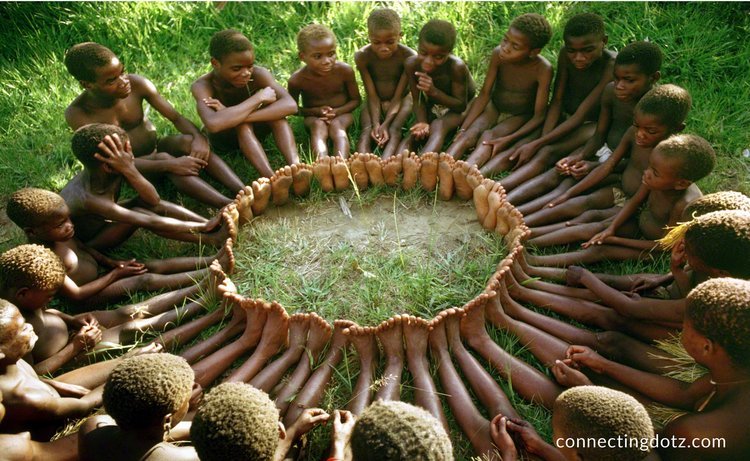Circle of Life: 5 Ways to Use Circles in Play, Art, and Learning
This month, we are exploring the concept of the circle. The circle is one of the most common shapes in the natural world. For example, the earth is round and natural rhythms like the shifts in seasons are cyclical.
Perhaps the most profound circle motif is the circle of life. This is an observable pattern in nature (for example, a seed grows into a plant, sets fruit, and makes seed) that demonstrates our interconnectedness with one another. Introducing kids to the concept of cycles can foster a sense of belonging and connectedness to the earth.
Looking to earth-based cultures and traditions, I found lots of great ideas to "think outside the box" and use the circle motif in every day activities.
Here are five ways to use the circle motif in play, art, and learning:
1. Observe and document the life cycle of plants.
Plant a seed in a clear glass jar and watch the seed sprout and grow. Then transplant the seedling into your garden or a larger pot and continue to observe its growing stages. Sunflowers and peas are ideal for this project because the seeds are big and you can collect seeds from the same plant later in the summer. But you can also use kitchen scraps like avocado and mango pits, which helps kids to learn about the food we eat and the plants that make the fruit. This video tutorial shows how to grow an avocado pit and its full life cycle.
2. Play the Osani circle game.
This is a game that is played by the Efe Pygmy people of the Ituri rainforest in the country that is known as the Democratic Republic of the Congo and it was documented by photographer Jean-Pierre Hallet. THNC teaches the game in our Eco Design class to introduce kids to natural design concepts. To play the Osani circle game, kids sit on the floor in a circle with feet touching. Each child takes turns naming something round in nature. If a person can’t think of one, they scoot back out of the circle. The last child who remains is said to be the wisest and will live a long and happy life.
3. Weave in a circle.
With a simple cardboard and some scrap yarn, kids can learn how to weave. This is a relaxing activity that involves learning coordination, repetition, and patterns. It’s also a foundation skill for making baskets. Here’s a great DIY activity post.
4. Design and grow an herb spiral.
An herb spiral is a mound-shaped garden bed that’s raised in the center and spirals downward to the ground level. It’s a great way to maximize a small space, move water, and create microclimates for different plants. The design is especially suited for herbs because water drains quickly downward. Learn how to make an herb spiral, a perfect spring weekend project with the family.
5. Make a nature mandala.
“Mandala means ‘circle’ in Sanskrit... It’s a circular symbol which represents the universe, serving as a reminder that life is continuous.” To make a nature mandala, first collect materials such as flowers, leaves, rocks, twigs, etc. Anything that sparks your curiosity and play. Collect several pieces of each material. Then arrange your collection into a circle, in various patterns like alternating, radiating, spiral, or concentric. Here’s a great example with instructions.
Got some creative circle ideas? Please share with us in the comments below!
Happily chasing circles,
Ann





